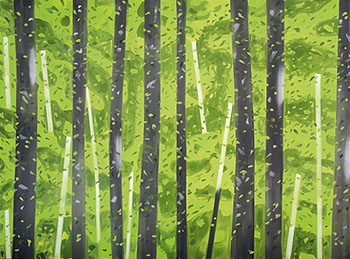
1993
Aquatint

2007



"Alex Katz is a leading figure painter of the new realism movement in the contemporary art. He is best known of his realistic portraits of friends and family, notable for their relaxed attitudes and uncomplicated bearings. In the late 1950s, he found himself among a growing number of artists dissatisfied with the then-dominant stream of abstract expressionism, with its emphasis on formal abstraction. The rebellion against abstract expressionism, which continued through the 1960s, took several forms. The most celebrated was the pop art of Andy Warhol, Robert Rauschenberg and others, who sought to mine the mother lodes of media imagery and consumer culture for the content of their art. In contrast to the pop artists, with their emphasis on the consumer icon, a number of painters in the mid – to – late 1050s, including Larry Rivers and Alex Katz, had begun to find their own inspiration in the literal rendition of human figures. Katz’s paintings from the late 1950s to the present have been characterized by such literal, yet expressive, portrayals of human figures. Stylistically, his figures are simplified in form, but not in caricatured or rendered grotesque. On the contrary, one of the hallmarks of Katz’s figures is their apparent normalcy. "
























